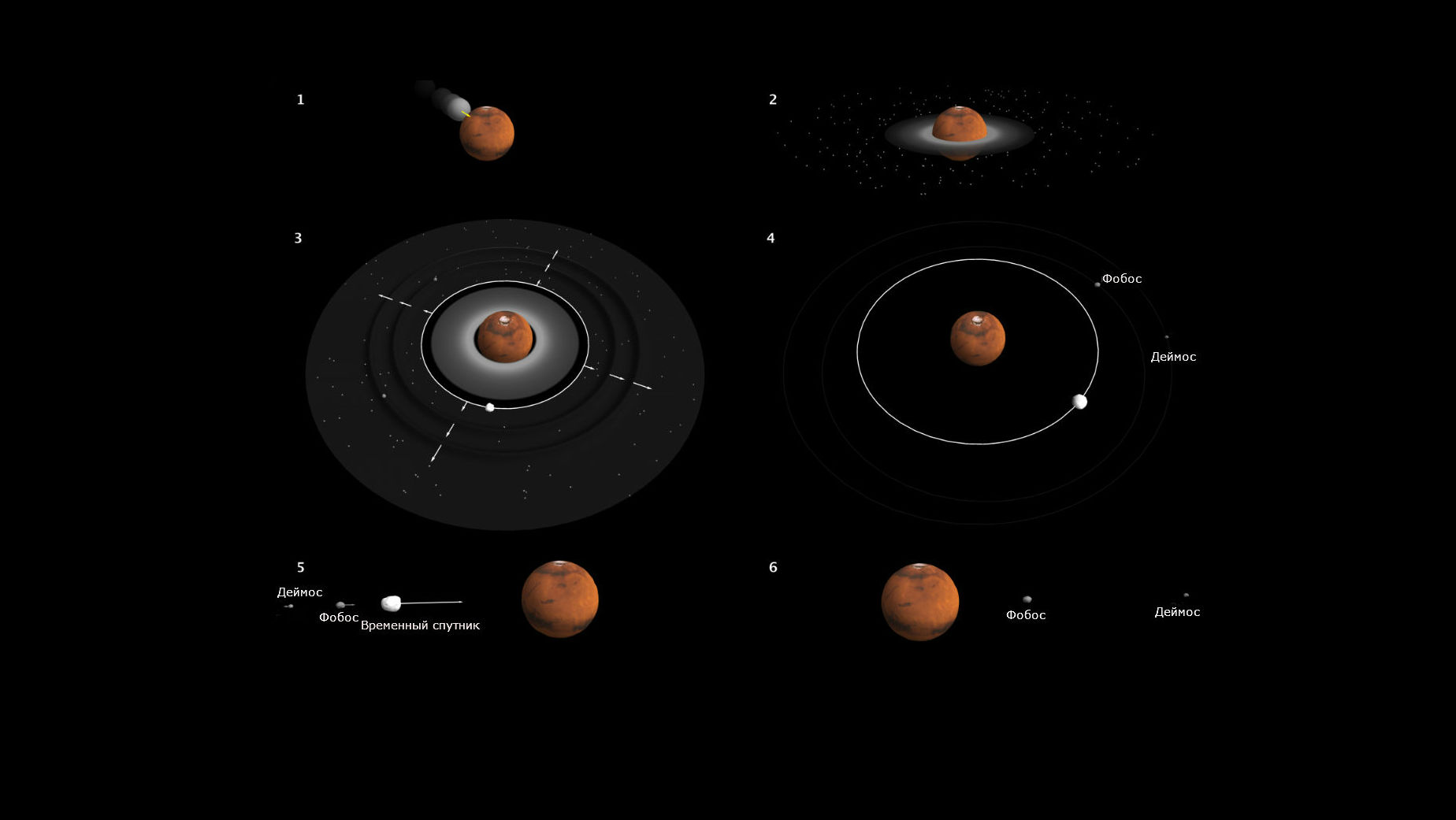Many astronomers are wondering how there were two natural satellites of Mars – Phobos and Deimos? For a long time scientists on the basis of data on their form, have assumed that once it had been asteroids that were captured over time the Red Planet. But the characteristics of their orbits contradict this hypothesis.
Two independent and complementary research may finally provide an answer to this question. One study conducted by scientists from the National Center for Scientific Research of France (CNRS) and the University of Aix-Marseille, eliminates the capture of asteroids. The researchers concluded that the only scenario consistent with the characteristics of the two satellites is a clash of large space objects body.
In the second study, an international team of scientists from Belgium, France and Japan have used advanced digital modeling to show how these satellites were formed from the debris of a “meeting” of Mars, and the size of planetesimals about three times smaller than it.
the simulation showed that the collision occurred 100 to 800 million years after the beginning of the formation of Mars. Fragments of the disaster have formed a very large disk around the Red Planet, consisting of a dense inner part containing matter, and very tenuous outer part, having in its composition of mostly gas.
According to astrophysicists, from the dense inner portion of the disk formed the satellite, which is a thousand times greater than the size of Phobos. Gravitational interaction created a massive body in the outer disk, probably acted as a catalyst for the wreckage and the further formation of other, smaller and more distant satellites.
After a few thousand years of Mars, according to scientists, it has been surrounded by a group of ten small satellites and one large. After that, millions of years later, when the disk has become much more sparse, the tidal forces of the Red Planet attracted most of these satellites back to the planet. Among the “returnees” satellite was also the largest. And only two, the most distant moons (Phobos and Deimos), were able to stay in their orbits.
The team of scientists under the direction of Pascal Rosenblatt (Pascal Rosenblatt) and Sebastien Charny (Sébastien Charnoz) combined three advanced modeling process, describing the different physical phenomena. They had to take into account the physics of giant collision dynamics arising wreckage, their accumulation in the form of satellites and long-term evolution of the satellite formed. It is noted that all these processes are modeled through a simulation is not possible.
Researchers from the Laboratory of Astrophysics Marseilles Observatory, a second study, ruled out the possibility of capturing objects Mars, based on statistical arguments and taking into account a wide variety of objects of the asteroid belt.
Moreover, they showed that the “signature” in the spectrum of light emitted by Phobos and Deimos, do not correspond to those of the primary substance that generated Mars. Thereon astrophysics we found that the satellites have been formed from fine dust size less than one micrometer. For this reason, scientists also support the collision scenario.
A very small grain size on the surface of Phobos and Deimos can not be explained, according to the researchers, only erosion as a consequence of the bombing of the interplanetary dust. This means that the satellites from the beginning consisted of very small grains, which are formed by the condensation of the gas in the outer regions of the disk

Astrophysics, who conducted the two studies agree on this conclusion. In addition, the formation of the Martian satellites of very small grains can also be explained by their surprisingly low density (because of this, they have a large internal porosity).
It should be noted that in addition to options to the collision and capture of Mars, asteroids existed another hypothesis. Proponents of the latter say that Phobos and Deimos have been formed with the Red Planet. This hypothesis must assume the same composition and the satellites of Mars. But low density satellites contradicts this hypothesis.
Thus, from all three hypotheses, thanks to two new investigations, “survived” only one. The first work to be published in the scientific journal The Astrophysical Journal, the second is published in the journal Nature Geoscience.
No comments:
Post a Comment